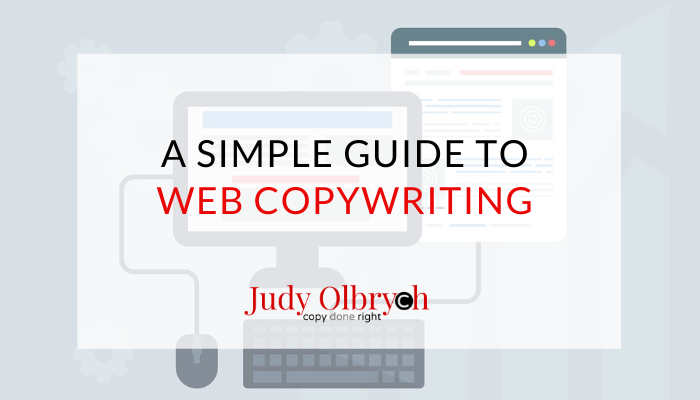What is web copywriting? And why does every online business need it?
You have only seconds to make a good first impression when potential customers first discover you online.
Here’s what happens:
- Visitors follow a link to your site or find you in search; search engines determine how your pages appear in the search results based on your content and metadata
- Once visitors land on your site, they form judgments in five milliseconds
- It takes only 5.75 seconds on average before a visitor leaves your page
Your web copy makes or breaks that first moment.
Keep reading to discover how to enable potential customers to find you online, begin sales conversations, and find resources leading them to your solutions.
What is Web Copy?
“Copy,” as defined by legendary copywriter Bob Bly, refers to the text used for marketing and promotion. Traditionally, this took the form of newspaper and magazine ads, direct mail, and signage.
Today, web copywriting includes just about any form of text you can publish online.
Business websites typically include the following pages:
- Home
- About
- Service or Products
- Contact
Software and technology sites may include one or more of the following pages:
- Case Studies
- Pricing
- Solutions or Use Cases
- Integrations
- Knowledge base articles
- Blog posts
Industrial manufacturing sites may include the following:
- Dedicated Product Pages
- Applications
- Capabilities
- Suppliers
- Industries Served
Including educational and persuasive articles in your content strategy establishes authority, builds your reputation as a trusted resource, and assists prospects who are making buying decisions.
In addition, you can employ direct response copywriting strategies throughout your site to prompt specific actions. For example, you may want to ask visitors to sign up for a free download, start a free trial, or request a quote.
Optimize For Search
How easily can potential customers find you?
By identifying keywords and phrases used in search and placing them strategically throughout your site, you can improve your standing in the Search Engine Results Pages (SERPS), drive traffic organically, and build authority in your niche.
Format your content: Adding headings, body text, and titles allows search engines to “see” your pages follow a logical structure.
Identify top keywords and search phrases related to your products and services: Place those keywords and related terms in title tags, meta-keywords, and alt-tags in your headings, and subheadings.
Add meta descriptions: this allows you to provide context for each page by adding content summaries for display in the SERPS. Fifty-six percent of B2B small business websites fail to use meta-descriptions, according to a study by Small Business Trends, so this is a fantastic opportunity for you to hook readers and make your listing stand out in the results.
“Click” … they’ve found you. Now, what do you say?
Start Sales Conversations on Your Page
“Advertising is multiplied salesmanship.” – Claude Hopkins, Scientific Advertising
Claude Hopkins, a pioneer of direct marketing, believed old-fashioned one-on-one sales conversations held the key to learning what motivated customers to buy.
In My Life in Advertising, Hopkins tells the story of a successful marketer who sold products door-to-door as part of his market research. He became familiar with individual buyers, their aspirations, and their concerns. Then, he then rolled his findings into successful ad campaigns.
Hopkins also shares how, as a young man working for the Bissell company, he dramatically increased sales with a new direct mail campaign. The new advertisements appealed directly to both the concerns of the American housewife and distributors. Instead of simply urging stores to buy more carpet sweepers, Bissell presented an opportunity: the privilege of displaying a new line of models made with exotic woods.
Web copywriting allows you to reach unlimited viewers through online advertising, email, and inbound marketing — without printing and mailing brochures, lugging presentation materials to a new location, or knocking on doors — one conversation at a time.
Yet how can a web page compare to a live conversation?
You’re most definitely not chatting at the office, the cafe, or the cocktail reception.
Frank won’t feel the least bit rude for checking his smartwatch, stepping away mid-sentence to walk the dog, or clicking back to the search results he left open in another tab. After all, you can’t see each other (unless we count data from heat maps, chatbots, and Google Analytics).
Here’s how:
1 – Capture his attention with a clear, concise, and relevant headline.
2 – Then, write the words you would use if Frank were standing across from you in real life.
- Write to one person.
- Say “You.”
- Address his specific needs and concerns, striving to express his thoughts better than he can express them himself.
- Go for the “aha” moment.
3 – Give him a way to respond.
Be a Resource
Now that you’ve started the conversation, what will you offer?
Include educational and persuasive content on your site to establish authority, build a reputation as a trusted resource, and help prospects make buying decisions. According to a report from the CMO Council, 87% of B2B buyers say online content significantly impacts vendor selection.
Consider offering the following educational content:
- Blog Posts
- Long Form Pillar Posts
- Solutions/Use Cases
- Resource Pages
- Case Studies
- Pricing Guides
- Help Page
- Integrations
- Features Pages
- Press Kit Page
- Whitepapers
Next Steps
Is it time to build a new site or refresh your existing content? Do you need a website assessment, content strategy, or done-for-you content to support your website and team?
* Robert W. Bly, The Copywriter’s Handbook: A Step-By-Step Guide To Writing Copy That Sells (Holt Paperbacks, 2007)

